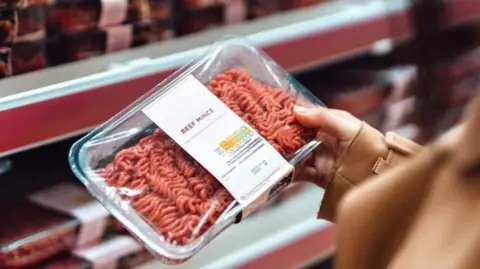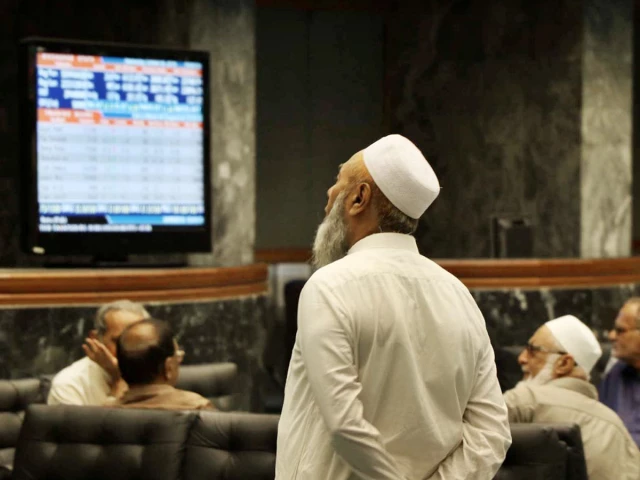Business
Gold prices in Pakistan Today – November 19, 2025 | The Express Tribune

At current prices, the looted gold is worth around $70 million. PHOTO: PIXABAY
In the international bullion market, gold price rises by $79 per ounce to $4,092. Gold prices increased today in both global and local markets.
Due to the global increase, the local price of gold per tola also rose by Rs7,900, reaching Rs431,562.
Additionally, the price per 10 grams of gold increased by Rs6,773 to Rs369,994.
Read: Gold drops despite rebound in global market
On Tuesday, gold prices fell even as the international market saw a rebound from a one-week low, supported by softer US employment data and expectations of a Federal Reserve rate cut in December.
According to the All-Pakistan Gems and Jewellers Sarafa Association (APGJSA), the price of gold per tola dropped by Rs7,000 to settle at Rs423,662. Similarly, the rate for 10-gram gold decreased by Rs6,002, closing at Rs363,221.
The decline comes a day after domestic bullion rates remained stable, with the per-tola price standing at Rs430,662.
In the international market, gold recovered after touching a one-week low, trading between $3,997 and $4,080. Adnan Agar, Director at Interactive Commodities, said global prices showed a mild correction following two days of upward movement.
Business
Good for mortgages, bad for food prices – how inflation dip affects you

Kevin PeacheyCost of living correspondent
 Getty Images
Getty ImagesWalking around your local supermarket and you’ll struggle to find much that’s healthy for your finances on the shelves – food price rises are accelerating.
The cost of the weekly shop is, and will continue to be, a worry for millions of people.
Beyond just food, prices of goods and services in general are going up, but the rate of those price rises have slowed.
And that is likely to bring better news for the cost of borrowing, in particular mortgage rates for homeowners and first-time buyers.
Are prices going up or down?
Prices pretty much always rise. Official statistics chart the movement in the cost of hundreds of goods and services in the UK.
It is the rate of increase that is crucial, and that inflation rate is published every month by the Office for National Statistics (ONS).
On Wednesday, the ONS said the rate of inflation had fallen to 3.6%, which means prices are rising more slowly than they were and will foster hope that inflation has peaked.

Delve a little further into the data, and there are more details about what is behind the latest trends.
For example, fish, vegetables, chocolate and confectionary were among the products that rose in price, although fruit prices fell slightly.
Recent research by the Bank of England found that people on average are still buying the same amount of food, but paying more for it. That said, they are changing the way they shop.
“Concerns about rising food costs and utility bills still dominate conversations,” it said.
“Households continue to change their shopping habits to reduce spending, such as buying more vegetables and reducing meat consumption.”
 Getty Images
Getty Images“Staples like bread, meat and potatoes all cost more than they did even a month ago,” says Danni Hewson, head of financial analysis at investment platform AJ Bell.
But she does point to a silver lining – the dip in the inflation rate means the Bank of England is now more likely to cut interest rates in December.
The Bank uses its benchmark interest rate – which heavily influences the cost of borrowing for households and businesses – to try to bring inflation to its target rate of 2%.
“Inflation remains well above the Band of England’s happy place of 2%,” says Alice Haine, personal finance analyst at Bestinvest.
But, she says, the latest figures could pave the way for a sixth interest rate cut since August last year.
The prospect of an interest rate cut has seen lenders make changes already. In recent weeks, many major lenders have lowered their rates for people getting a new fixed-rate mortgage or renewing their current one.
“There has been particular emphasis placed on rates for home movers with some of the best rates available for purchases,” says David Hollingworth, of mortgage brokers L&C.
Data from the financial information service Moneyfacts shows that the average rate on a new two-year fixed deal has fallen to 4.88%, and is down to 4.93% for the average five-year fixed deal.
Average rates for those only able to put down a deposit of 5% or 10% – often first-time buyers – are now looking lower than they have been at any time in the last two or three years.
Why are lenders cutting rates now?
Inflation is only one factor in lenders’ decisions to cut mortgage rates now.
Generally, Christmas is a quiet time for the housing market as potential buyers and sellers concentrate on turkey and trimmings instead.
So, they may be lowering rates in a bid to stimulate custom.
The same cannot be said for savings rates. “Competition has been scarce,” says Caitlyn Eastell, from Moneyfacts.
That is compounded by the fact that many of those buyers, sellers and savers have put plans on hold until they find out what happens in the Budget delivered by Chancellor Rachel Reeves on 26 November.
The Budget looms large over the housing market, with talk of taxation on high value properties, as well as over economic activity in general.
Reeves wants to introduce measures to lower the rate of inflation, and help people with the cost of living. However, she also needs to bring in more money or cut government spending to meet her own fiscal rules.
It is a delicate balancing act that will affect individual and family finances, affecting the money people have to spend in the supermarket and the appetite they have to save, as well as buy or sell a home.
Business
Lowe’s beats on quarterly sales, but lowers full-year profit forecast amid economic uncertainty

In an aerial view, a customer enters a Lowe’s store on May 21, 2025 in Cotati, California.
Justin Sullivan | Getty Images
Lowe’s on Wednesday posted a year over year sales increase for the quarter, but the company lowered its full-year profit outlook slightly to reflect a tougher economic backdrop.
The home improvement retailer now expects full-year total sales to be $86 billion, up from its previous expectations of $84.5 to $85.5 billion, because of a recent acquisition. However, it said it expects comparable sales, an industry metric that takes out one-time factors, to be flat compared to a year ago compared with the prior range it had shared of flat to up 1%.
For the full year, it now expects adjusted earnings per share of approximately $12.25, on the lower side of its previous range of $12.20 to $12.45.
In a news release, the company said it revised its outlook to “reflect the ongoing uncertainty in the macroeconomic environment” and the acquisition of Foundation Building Materials, which closed last month.
Here’s what the retailer reported for the fiscal third quarter compared with Wall Street’s estimates, according to a survey of analysts by LSEG:
- Earnings per share: $3.06 adjusted vs. $2.97 expected
- Revenue: $20.81 billion vs. $20.82 billion expected
Shares rose more than 5% in premarket trading on Wednesday after Lowe’s said its current quarter was off to a good start.
Lowe’s CEO Marvin Ellison said in the news release that the retailer posted positive comparable sales in the third quarter and also started the current quarter with positive comparable sales, “despite headwinds related to hurricane activity in the prior year.”
Lowe’s comparable sales rose 0.4% in the fiscal third quarter.
Home improvement trends, however, remain challenged by a slower housing market and higher borrowing costs — dynamics that have challenged the sector for more than two years.
In the three-month period ended Oct. 31, Lowe’s net income fell to $1.62 billion, or $2.88 per share, compared with $1.7 billion, or $2.99 in the year-ago period. Revenue increased from $20.17 billion in the year-ago quarter. Adjusting for one time items, including pre-tax expenses associated with its acquisitions, Lowe’s reported earnings of $3.06 per share.
Rival Home Depot on Tuesday also lowered its full-year profit forecast after missing Wall Street’s quarterly earnings expectations for the third quarter in a row. Chief Financial Officer Richard McPhail attributed weaker earnings to lower-than-usual storm activity, a tough housing market and consumer uncertainty.
Like Home Depot, Lowe’s has tried to attract more business from contractors and other home professionals to offset weaker do-it-yourself sales. In August, Lowe’s announced it had struck a deal to acquire Foundation Building Materials, a distributor of drywall, insulation and other interior building products for large residential and commercial professionals, for about $8.8 billion.
Earlier this year, Lowe’s announced another pro-focused acquisition. It said in April it had agreed to buy Artisan Design Group, which provides design services and installation of flooring, cabinets and countertops for homebuilders and property managers, for nearly $1.33 billion.
On the company’s earnings call in August, Lowe’s CFO Brandon Sink said he expected the company’s own strategy, not an improving industry backdrop, to drive sales for the year. He said the retailer expects “a roughly flat home improvement market” for the year.
Business
UK inflation falls in pre-Budget boost Rachel Reeves

Inflation fell to 3.6 per cent in October, in a pre-Budget boost to Rachel Reeves – as well as to consumers and businesses.
The latest update from the Office for National Statistics (ONS) showed Consumer Prices Index (CPI) inflation dropping from September, when it surprisingly held at 3.8 per cent. That has led to most analysts to declare inflation has peaked across the UK.
It is the first time the rate of inflation has been at this level since June of this year – though just three months prior to that, in March it was as low as 2.6 per cent.
Some economists were expecting CPI to fall to as low as 3.5 per cent last month, and while that has not quite transpired, the downturn in price growth will be cause for relief for households and firms which have had to deal with constant price pressures and uncertainty this year.
The anticipated fall was “primarily based off last year’s big increase in energy prices dropping out of the annual comparison”, explained RSM UK’s chief economist Thomas Pugh, as well as continued slowdown in food price inflation.
It comes just a week before the chancellor, Rachel Reeves, presents the Budget in which it is expected a raft of tax increases will be unveiled.
On the falling figures, Ms Reeves said: “This fall in inflation is good news for households and businesses across the country, but I’m determined to do more to bring prices down. That’s why at the budget next week I will take the fair choices to deliver on the public’s priorities to cut NHS waiting lists, cut national debt and cut the cost of living.”
In disagreement, Sir Mel Stride MP, shadow chancellor of the exchequer, said: “Inflation has been above target every single month since Labour’s last Budget, leaving working people worse off. Labour’s last Budget hiked borrowing and taxes, stoking the inflation now hitting families. If Labour had any backbone, they would adopt our £47 billion savings plan and our Golden Economic Rule next week to ease inflationary pressures.”
Daisy Cooper, deputy leader for the Liberal Democrats added: “As the cost-of-living crisis rages on, the Chancellor mustn’t look this small gift horse in the mouth. Hitting people with a stealth tax at next week’s Budget would prolong the pain of higher taxes for much longer and unfairly pull poorer pensioners and low-income workers into paying tax for the first time.
Get a free fractional share worth up to £100.
Capital at risk.
Terms and conditions apply.
ADVERTISEMENT
Get a free fractional share worth up to £100.
Capital at risk.
Terms and conditions apply.
ADVERTISEMENT
“We Liberal Democrats are calling for emergency measures to slash people’s energy bills, save our high streets with a VAT cut for hospitality and boost growth in every corner of the UK – funded fairly by taxing the banks. The Chancellor must put households and high streets first and put an end to the most vulnerable from having to choose between heating and eating.”

The ONS have said that housing and household services made “the largest downward contribution” to the changing rate of CPI; while food and non-alcoholic beverages made the largest offsetting upward contribution.
Costs from health, communication and transport also dropped to contribute towards lowered inflation rates, while education and recreation and culture costs rose.
The continuing disinflation – plus recent data around rising joblessness – is likely to mean the Bank of England cut interest rates in December.
George Brown, senior economist at Schroders, said the situation beyond that remains cloudy and will depend very much on Rachel Reeves’ Budget. “Evidence inflation has peaked should tip the scales towards a December rate cut. But any further rate cuts will largely depend on the contents of the Chancellor’s red box. If VAT and green levies are eliminated from household energy bills, inflation could fall by as much as half a percentage point,” he said.
“But we remain concerned that broader price pressures will prove persistent. Wage growth is still well above a target-consistent pace, especially given repeatedly weak productivity.”
Lindsay James, strategist at Quilter, added that risks to the wider economy remain. “Although the direction of travel is improving, the wider economic backdrop remains fragile. Growth has been subdued all year, and the labour market is now cooling at a faster pace. The economy is clearly at a point of significant risk as we move towards 2026,” she said.
“Amidst rising unemployment , ill thought-out plans to target the tax relief on offer from salary sacrifice pensions not only store up greater problems for the future but also make workers even more expensive for companies who have already been hit hard by hikes to National Insurance and the minimum wage.”
The National Institute of Economic and Social Research (NIESR) also added that they expected two further rate cuts from the Bank of England next year, after inflation had “reached its peak”. “Unlike the announcements in the autumn 2024 budget, where a rise in business costs may have contributed to price increases in 2025, we think the upcoming budget is less likely to be inflationary,” added the NIESR in a statement.
“Falling inflation is welcome news and provides some relief for households heading into the winter months,” said Raisin UK’s co-founder Kevin Mountford. “While borrowing costs remain high, stabilising price pressures may pave the way for lower interest rates in the future, which could make mortgages and loans more affordable over time.”
Consumers were reminded that falling inflation, while a positive, wouldn’t be of help if they over-stretched themselves across the upcoming period – particularly with rates on borrowing still higher.
“No matter how healthy your finances, Christmas is an expensive time, so, while it’s good news that inflation is falling, many households will be spending more in the coming weeks on festive gifts, food and going out. The Black Friday sales can be very tempting, but – no matter how big the discount, it’s not a bargain if you have to take on unaffordable debt to buy it,” said Sarah Pennells, consumer finance specialist at Royal London.
Those with cash sat in accounts earning interest below the rate of inflation were urged to move their money elsewhere by Derek Sprawling, head of money at Spring.
“A fall in inflation offers some relief, but I urge savers not to become complacent. Even with a lower rate, billions remain in accounts paying below inflation, which remains relatively high. Savers should take this opportunity to review their savings options and switch to accounts that deliver returns above inflation, ensuring their money continues to grow in real terms,” he explained.
“Furthermore, with the Budget due, the outlook for interest rates is volatile regardless of the inflation rate. Moving your rainy-day savings to an account that gives a better return without restricting access provides better returns now and flexibility in the future.”
“There remains a significant gap between the best and worst rates available, so ensuring you’re regularly reviewing your interest rate and switching where possible is key,” added Shawbrook Bank’s Sally Conway.
-

 Tech1 week ago
Tech1 week agoFrom waste to asset: Turning ethanol production CO₂ into jet fuel
-

 Tech4 days ago
Tech4 days agoNew carbon capture method uses water and pressure to remove CO₂ from emissions at half current costs
-

 Politics5 days ago
Politics5 days agoBritish-Pakistani honoured for transforming UK halal meat industry
-

 Sports4 days ago
Sports4 days agoTexas A&M officer scolds South Carolina wide receiver after touchdown; department speaks out
-

 Business5 days ago
Business5 days agoWhat’s behind Rachel Reeves’s hokey cokey on income tax rises?
-

 Business4 days ago
Business4 days agoThese 9 Common Money Mistakes Are Eating Your Income
-

 Fashion6 days ago
Fashion6 days agoAdidas & Patrick Mahomes expand NIL programme with Texas Tech athletes
-

 Politics6 days ago
Politics6 days agoInternet freedom declines in US, Germany amid growing online restrictions











